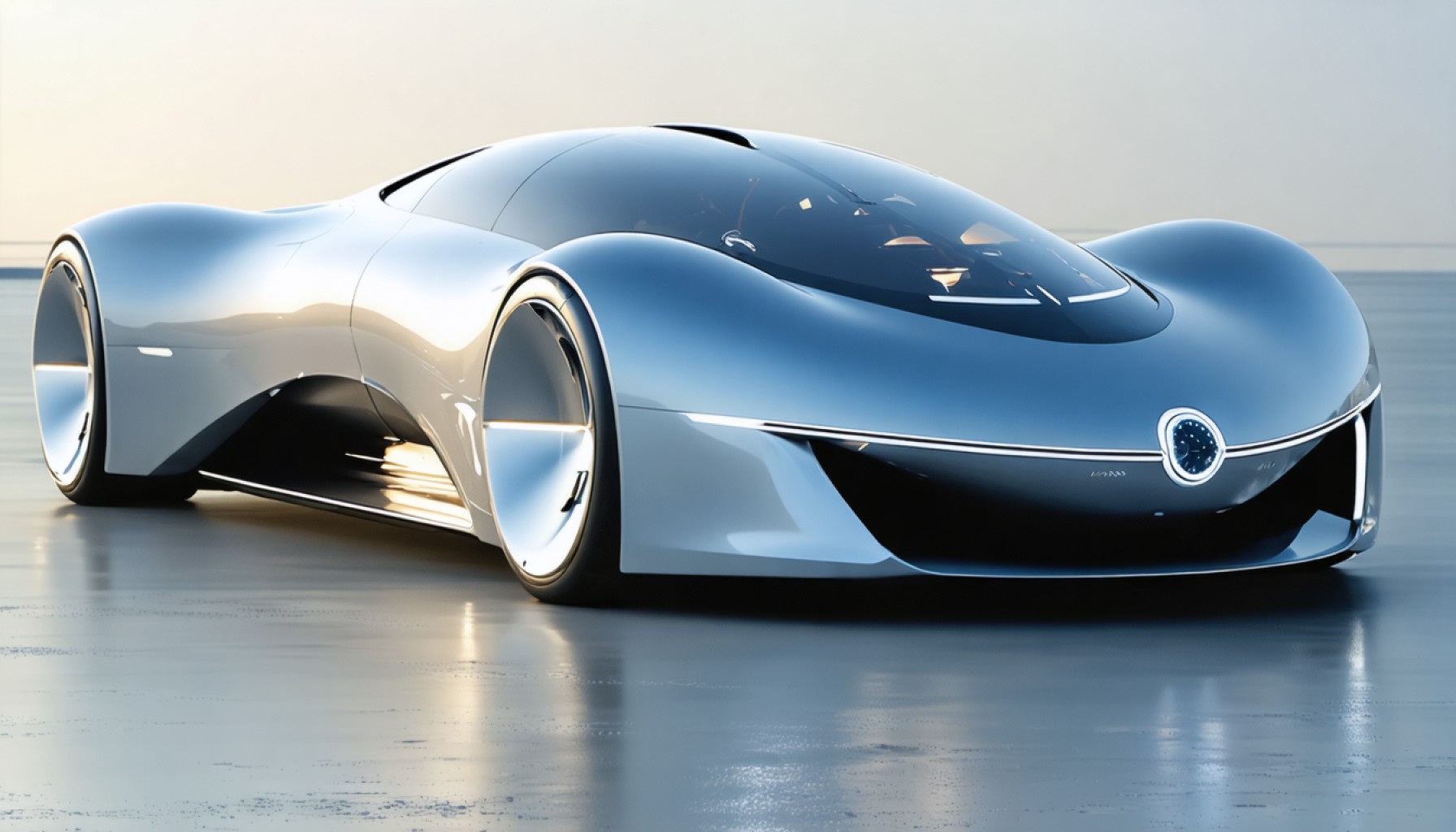- The Toyota ES3 concept car exemplified groundbreaking fuel efficiency, achieving an impressive 47 kilometers per liter, due to its lightweight construction using aluminum and resin.
- Its aerodynamic design, featuring a sloped roof and minimalistic curves, enhanced performance and fuel economy.
- Powered by a 1.4-liter direct-injection diesel turbo engine with a CVT, the ES3 combined power and economy seamlessly.
- Environmentally conscious design incorporated recycled and plant-based materials, including innovative bioplastics, advancing sustainability efforts.
- The ES3’s interior showcased future-oriented design with aluminum reinforcements and modern aesthetics.
- Although never mass-produced, the ES3 remains a vision of what future automotive engineering could achieve.
Imagine gliding down the highway, surrounded by the sleek contours of a car that defies the constraints of both fuel consumption and environmental degradation. This fantasy almost became reality when Toyota unveiled the ES3, a compact concept car, at the 2001 Tokyo Motor Show.
Fuel efficiency soared with the ES3, boasting a remarkable 47 kilometers per liter, eclipsing the fuel dynamics of the most celebrated hybrids of today. The secret? A featherweight design achieved through a daring blend of aluminum and resin, reducing the vehicle’s weight to a mere 700 kilograms.
The car wasn’t just about fuel efficiency. Its design was a masterclass in aerodynamics, with a sloped roof and minimalistic curves that sliced through the air with precision. A cutting-edge 1.4-liter direct-injection diesel turbo engine paired with a CVT formed the powerhouse under the hood, ensuring both power and economy were in perfect harmony.
But the ES3’s genius truly shined in its environmental foresight. Toyota pioneered the use of recycled and plant-based materials, introducing groundbreaking bioplastics that promised reduced environmental impact. Catalytic innovations furthered emission cleanliness, setting new standards that seemed ahead of their time.
Inside, the ES3 felt like the cockpit of the future, showcasing its aluminum reinforcements and modern interiors, hinting at what could have been—had the ES3 ever made it to production.
Though it remained a dazzling concept, the ES3 stands as a testament to Toyota’s visionary engineering. It raises a poignant question: How different might our world be if such innovations had been given a chance to mature on the mass market?
Could Toyota’s ES3 Have Changed the Automotive World?
Real-World Use Cases
The Toyota ES3 concept car, though never mass-produced, offers numerous insights into potential real-world applications. Its lightweight design, high fuel efficiency, and use of sustainable materials could have been pivotal in developing modern compact vehicles and influencing manufacturers toward sustainable practices. The ES3’s innovations would be particularly useful for urban commuting, where fuel efficiency and environmental impact are critical factors.
Market Forecasts & Industry Trends
If the ES3 had entered production, it could have accelerated trends toward lightweight and fuel-efficient vehicles. The automotive industry has progressively shifted toward hybrid and electric vehicles due to environmental concerns and stricter regulations. Companies now focus on reducing emissions and improving fuel economy, similar to what Toyota proposed with the ES3. The projected growth in global electric vehicle sales suggests that innovations in efficiency and sustainability continue to be crucial market drivers.
Features, Specs & Pricing
Features & Specs:
– Fuel Efficiency: 47 kilometers per liter
– Weight: 700 kg
– Engine: 1.4-liter direct-injection diesel turbo
– Transmission: CVT (Continuously Variable Transmission)
– Materials: Aluminum, resin, bioplastics
– Design: Aerodynamic with minimalist curves
Pricing Estimate: While no pricing was established due to its concept nature, the ES3’s lightweight materials and innovative technology would have likely positioned it at a premium compared to traditional compact cars of the early 2000s.
Reviews & Comparisons
Although the ES3 never hit the market, it is often compared to modern hybrids and electric vehicles due to its advanced features at the time. Reviewers admire Toyota’s forward-thinking in combining style, efficiency, and sustainability. Modern Toyota hybrids and electric vehicles, like the Prius and the Mirai, are seen as spiritual successors to the ES3, carrying forward its innovative ethos.
Controversies & Limitations
The ES3’s reliance on bioplastics and recycled materials posed manufacturing challenges that may have contributed to its non-production. At the time, the automotive industry was not fully prepared for such a radical shift in materials, and infrastructure for mass-producing bioplastics was underdeveloped.
Pros & Cons Overview
Pros:
– Unmatched fuel efficiency for its time.
– Pioneering use of sustainable materials.
– Advanced aerodynamic design.
Cons:
– Technological limitations in production.
– Potentially high manufacturing costs.
– By being only a concept, it lacked market testing and consumer feedback.
Security & Sustainability
The ES3 emphasized sustainability through its use of recycled and plant-based materials. However, security features typical in modern vehicles, such as advanced driver assistance systems, were not part of the ES3’s design, showcasing a gap in an otherwise forward-thinking concept.
Actionable Recommendations
1. Embrace Lightweight Materials: Automotive enthusiasts and manufacturers should explore the use of alternative materials to reduce vehicle weight and improve fuel efficiency.
2. Focus on Aerodynamics: When designing vehicles, prioritizing aerodynamic efficiency can improve fuel consumption and reduce emissions.
3. Consider Sustainability: Integrating sustainable practices by utilizing recycled materials and promoting bioplastics can lead to a more environmentally friendly automotive industry.
Quick Tips for Consumers
– When choosing a car, consider models that boast high fuel efficiency and use sustainable materials.
– Watch for emerging trends in the industry, such as bioplastics, which may lead to eco-friendly and efficient vehicles in the near future.
To learn more about Toyota’s current lineup and innovations, visit the official Toyota website.
